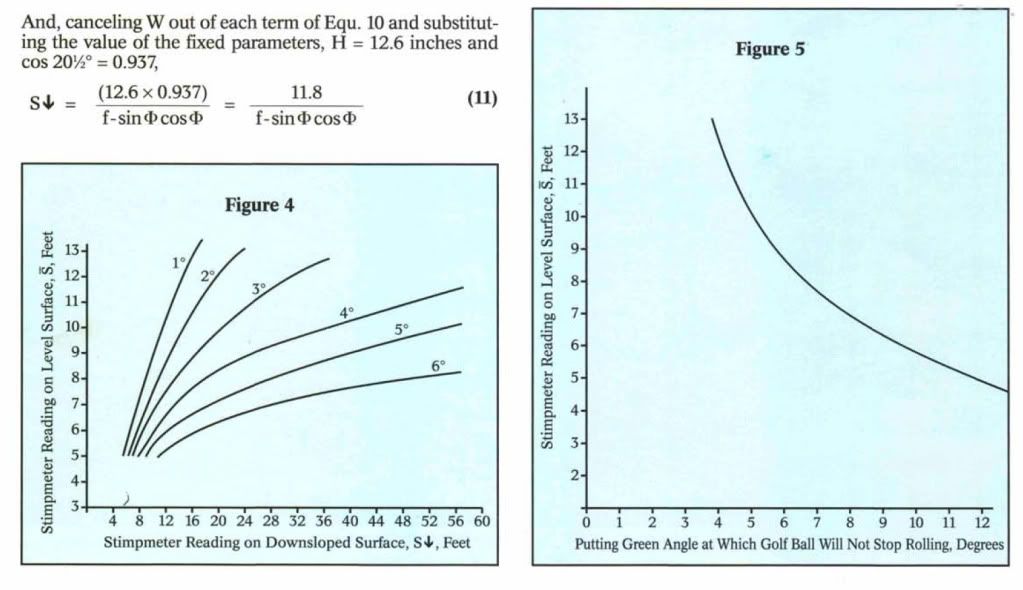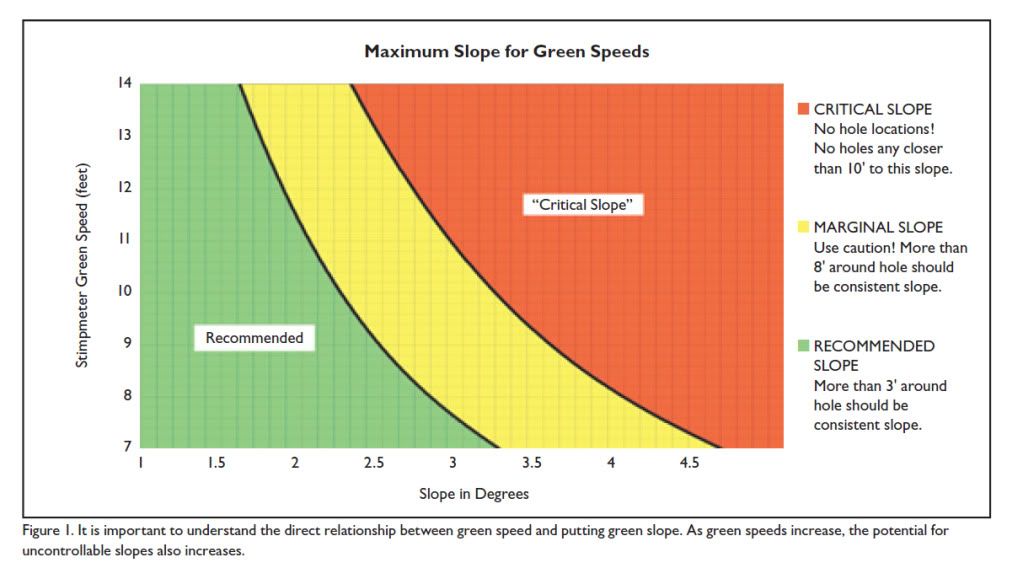Patrick,
No need to e-mail it. Davis has supplied the link.
The graph that I posted is presented differently than that presented by Weber. Weber does not prescribe marginal and critical pinning areas. His is more oriented to how much a ball will roll out on a given upslope or downslope based on Stimp readings and when the ball will not stop rolling at all.
Interestingly, even though it was done in 1997 he used a small ball in his calculations.
His conclusion was:
"Generalizing, slow-to-medium speed greens, say
Stimpmeter reading 5 to 8 on a level green, although they
may be undulated upward of 5 to 6 degrees remain reasonably
manageable by the golfer. Medium-to-fast greens, say 8 to 12
Stimpmeter reading on a level green, start destabilizing the
nerves of golfers when angled upwards of 3 to 4 degrees.
Otherwise stated, markedly undulated golf greens, typical of
most time-honored courses, would be better maintained
with medium-to-slow speed greens, as they had been
architecturally conceived to challenge golfers by their contours,
not their slickness. To cope with fast greens, surface
angularities need be attenuated in fairness to playability by
the golfer and, lest we forget, maintenance by the superintendent"
His graphic was expressed in degrees, not percentage slope, for Ian's benefit.
Here's his graphic and the Lemons' one that I posted. See if you think they are saying the same thing.


To tie this back to this thread, Weber's chart seems to indicate that on a green sloped at 5* that a ball is on the precipice of not stopping if the green is Stimping at 10.5'. I'm pretty sure he's using degrees and not percentage slope. The reports about the 11th hole at TOC seem to say it had a slope of 5 (but, not clear if that is % slope or degrees). If it was degrees then they would have been living on the edge if there was any wind at a Stimp of 10.5. If it was a 5% slope then there was some margin for pins there - absent any wind. I presume that they measured the slope accurately by whatever measure before they erased it, although we probably won't know what it was given what seems to be the R&A's communication approach.